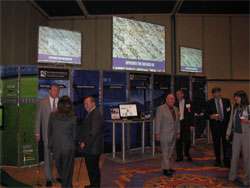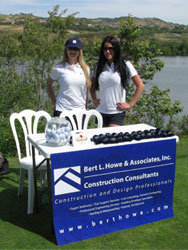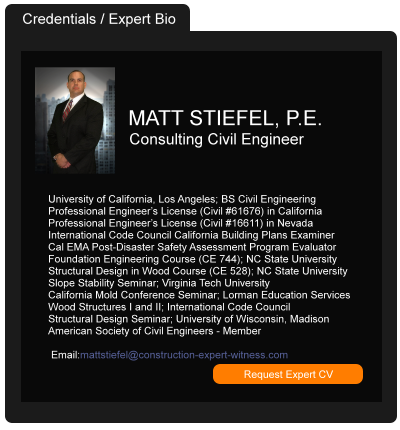Hydrogen Powers Its Way from Proof of Concept to Reality in Real Estate
May 10, 2021 —
Victoria Judd, Sidney L. Fowler & Robert G. Howard - Gravel2Gavel Construction & Real Estate Law BlogHydrogen is the new buzzword in every industry, and real estate is no exception. Hydrogen does not emit carbon dioxide when burnt and could therefore help reduce the climate impact of buildings, which in aggregate represent one of the biggest emitters of greenhouse gases after industry and surface transport. To the extent that hydrogen is to become an important power source globally, it will need to enter the domestic power market. The first step appears to be the development of pilot villages.
In the UK, there are several hydrogen trials in uninhabited properties or in closed private networks. There are some uninhabited houses on a Royal Air Force base in Cumbria that are exclusively heated with hydrogen and also a private gas network at Keele University which uses 20 percent hydrogen blended with natural gas. In addition, there is a small village near Newcastle that is being used as a test case: for a period of 10 months starting in spring 2021, up to 20 percent hydrogen will be blended into the natural gas network so that more than 650 homes can be partially heated by hydrogen. It is expected that a small number of additional villages will be able to heat their homes with 100 percent hydrogen as soon as 2022, with a scale up to have a hydrogen town by 2030.
Reprinted courtesy of
Victoria Judd, Pillsbury,
Sidney L. Fowler, Pillsbury and
Robert G. Howard, Pillsbury
Ms. Judd may be contacted at victoria.judd@pillsburylaw.com
Mr. Fowler may be contacted at sidney.fowler@pillsburylaw.com
Mr. Howard may be contacted at robert.howard@pillsburylaw.com
Read the court decisionRead the full story...Reprinted courtesy of
Appeals Court Upholds Decision by Referee in Trial Court for Antagan v Shea Homes
May 10, 2012 —
CDJ STAFFIn the case Antangan v. Shea Homes Ltd. Partnership (Cal. App., 2012), Plaintiffs appealed “an order vacating a judgment and entering a modified judgment in their construction defect action against defendants Shea Homes, Inc. and Shea Homes Limited Partnership,” while the Defendant, Shea Homes Limited Partnership (Shea Homes) appealed “an order of the judicial referee denying its motion to strike and tax costs.”
�On the Antagon issue, the appeals court concluded that “the trial court did not err by vacating and modifying its judgment so that the cost of referee’s fees would be equally divided by the parties and consistent with a prior stipulation they filed in court.”
�On the Shea Homes issue, the appeals court concluded: “1) the judicial referee did not err by ruling that plaintiffs’ offers to compromise (§ 998) were validly served on Shea Homes’ counsel, 2) the offers substantially complied with statutory requirements, 3) the offers were not required to be apportioned, and 4) the referee’s award of $5,000 as costs for a person assisting plaintiffs’ counsel was not an abuse of discretion.” The appeals court affirmed the judgment.
�Here is a brief history of the trial case: “Plaintiffs Chito Antangan, Jimmy Alcova and other homeowners brought an action against defendants Shea Homes, Inc. and Shea Homes Limited Partnership for damages alleging that the properties they purchased from these ‘developer defendants’ were defective. Plaintiffs claimed numerous construction defects required them ‘to incur expenses’ for ‘restoration and repairs’ and the value of their homes had been diminished.”
�In response, Shea Homes filed a motion for an order to appoint a judicial referee. The motion was granted and it was ruled that “a referee would ‘try all issues’ and ‘report a statement of decision to this court.’”
�On May 10, 2010 the judicial referee (Thompson) “awarded plaintiffs damages and various costs, and ruled that ‘Shea Homes shall bear all of the Referee’s fees.’” The latter ruling would become a matter for contention later on.
�In July of 2010, the plaintiffs “sought, among other things, $54,409.90 for expert fees, and $14,812.50 for the services of Melissa Fox for ‘exhibit preparation & trial presentation.’ Shea Homes filed a motion to strike and/or tax costs claiming: 1) Fox was a paralegal, 2) plaintiffs were not entitled to attorney’s fees, and 3) the fees for Fox’s services were an indirect and improper method to obtain attorney’s fees. The referee disagreed and awarded $5,000 for Fox’s services. The referee also ruled that plaintiffs had properly served valid offers to compromise (§ 998) on Shea Homes’ counsel in 2009. He said those offers to defendants in the case at that time did not have to be apportioned.”
�“Antangan contends the trial court erred when it vacated and modified its original judgment, which ordered Shea Homes to pay all the referee’s fees. We disagree.”
�Antagon contended that the trial court erred when it vacated and modified its original judgment regarding Shea Homes paying the referee’s fees. The appeals court disagreed: “A trial court has inherent authority to vacate or correct a judgment that is void on its face, incorrect, or entered by mistake. (§ 473; Rochin v. Pat Johnson Manufacturing Co. (1998),67 Cal.App.4th 1228; Olivera
�Read the court’s decision…
� Read the court decisionRead the full story...Reprinted courtesy of
Dispute Over Exhaustion of Primary Policy
May 20, 2015 —
Tred R. Eyerly – Insurance Law HawaiiIn a dispute between the excess and primary carriers, the Fifth Circuit determined the primary policy was exhausted, triggering coverage under the excess policy. Amerisure Mut. Ins. Co. v. Arch Spec. Ins. Co., 2015 U.S. App. LEXIS 6627 (5th Cir. April 21, 2015).
Amerisure issued a CGL policy to Admiral Glass & Mirror Co. The policy provided excess over any coverage under a controlled insurance program policy. Arch issued an Owner Controlled Insurance Program (OCIP) policy to Endeavor Highrise, LP and to its contrators and subcontractors for bodily injury and property damage arising out of the construction of the Endeavor Highrise. Admiral was a subcontractor insured under the OCIP.
The OCIP had combined bodily injury and property damage limits of $2,000,000 per occurrence, a general aggregate limit of $2,000,000 and a products-completed operations aggregate limit of $2,000,000. The OCIP contained a Supplementary Payments provision which provided that Arch would pay "[a]ll expenses we incur" in connection with any covered claim, and that "[t]hese payments will not reduce the limits of insurance." Endorsement 16, however, expressly deleted and replaced this statement with: "[supplementary payments] will reduce the limits of insurance." The OCIP also provided that Arch's duty to defend ended "when we have used up the applicable limit of insurance in the payment of judgments or settlements."
Read the court decisionRead the full story...Reprinted courtesy of
Tred R. Eyerly, Insurance Law HawaiiMr. Eyerly may be contacted at
te@hawaiilawyer.com
2011 West Coast Casualty Construction Defect Seminar – Recap
June 01, 2011 —
CDJ STAFF �  | �
�| Event exhibitors and sponsors contribute to an informative and engaging environment | �
�This year’s meeting was the best yet for the industry-leading construction defect and claims event.
�This year’s seminar concluded on May 13, 2011 with the Construction Defect Community Charitable Foundation Golf Tournament, held at Strawberry Farms Golf Course.
�The Disneyland Hotel in Anaheim, California was the place where more than 1,500 attendees convened for two days of professional development activities and seminars that included CLE workshops and panel discussions of special interest to legal and insurance professionals concerned with construction defect and claims litigation. Key events included “Challenges for Experts in Construction Defect Claims and Litigation,” “Keeping Up with Construction Defect Coverage,” and “Tips for Avoiding the ‘Perfect Storm’ in Handling of Wrap Claims.”
� �  | �
�| Supporting the golf tournament at the 15th hole | �
�This year’s Ollie award was given to George D. Calkins II, Esq. The West Coast Casualty Jerrold S. Oliver Award of Excellence was named in honor of the late Judge Jerrold S. Oliver, and recognizes an individual who is outstanding or has contributed to the betterment of the construction community.
�In addition to being the most comprehensive professional development seminar in the area of construction defects, this year’s seminar was equally valuable as a networking opportunity for members of the industry. People participated in professional development events during the day and then continued networking in the evening at numerous social events. The Lawn Party as well as the legendary Wood, Smith, Henning & Berman events were very well attended. Additional valuable networking events were hosted by a number of industry professionals at the House of Blues, and Tortilla Joe’s.
�As of this writing the 2011, West Coast Casualty's Construction Defect Seminar has applied for or has already received the following continuing education accreditation in the following areas;
�Read the full story…
�For more information about next year’s event, visit West Coast Casualty.
Read the court decisionRead the full story...Reprinted courtesy of
Policy's One Year Suit Limitation Does Not Apply to Challenging the Insurer's Claims Handling
October 07, 2024 —
Tred R. Eyerly - Insurance Law HawaiiThe California Supreme Court held that the policy's suit limitation of one year, consistent with the statute requiring suit be file within twelve months after a loss, did not apply to claims alleging violation of the state's unfair competition law (UCL). Rosenberg-Wohl v. State Farm Fire and Cas. Co., 2024 Cal. LEXIS 3806 (Cal. July 18, 2024).
Plaintiff held a homeowners policy issued by State Farm that provided coverage for all risks except those specifically excluded under the policy. The suit limitation provision provided, "Suit Against Us. No action shall be brought unless there has been compliance with the policy provision.The action must be started within one year after the date of loss or damage."
On two occasions in late 2018 or early 2019, plaintiff's neighbor stumble and fell as she descended a staircase at plaintiff's residence. Plaintiff discovered that the pitch of the stairs had changed, and replacement of the stairs was required to fix the issue. She contacted State Farm on or around April 23, 2019. On August 9, 2019, plaintiff submitted a claim to State Farm, seeking reimbursement for what she paid to repair the staircase. State Farm denied the claim, advising there was no coverage and identifying several exclusions as potentially applicable.
Read the court decisionRead the full story...Reprinted courtesy of
Tred R. Eyerly, Damon Key Leong Kupchak HastertMr. Eyerly may be contacted at
te@hawaiilawyer.com
Merger to Create Massive Los Angeles Construction Firm
July 16, 2014 —
Beverley BevenFlorez-CDJ STAFFAECOM Technology Corp., a Los Angeles engineering and construction firm, has agreed to pay $4 billion to acquire URS Corp., their San Francisco competitor. According to the Sacramento Bee, “The combined company will employ about 95,000 people in 150 countries.”
AECOM is currently building the World Trade Center in New York, and previous projects include the Los Angeles Police Department headquarters, and renovations to the Port of Los Angeles and the Bradley international terminal at the Los Angeles International Airport, the Sacramento Bee reported. Furthermore, “URS has worked on the Garden Grove (22) Freeway reconstruction, the UCLA Ronald Reagan Medical Center, the Port of Long Beach, the Gold Line Eastside Extension in Los Angeles and the Disneyland resort expansion.”
Read the court decisionRead the full story...Reprinted courtesy of
Resolving Condominium Construction Defect Warranty Claims in Maryland
September 04, 2018 —
Nicholas D. Cowie - Maryland Condo Construction Defect BlogA Guide for Maryland Condominium Associations
Newly constructed and newly converted condominiums in Maryland often contain concealed or “latent” construction defects. Left undetected and unrepaired, latent defects stemming from the original construction of a condominium can cause extensive damage over time, requiring associations to assess their members for unanticipated repair costs that could have been avoided by making timely developer warranty claims.
This article provides a general overview of how Maryland condominium associations transitioning from developer control can proactively identify and resolve construction defect claims with condominium developers and builders before warranty and other legal rights expire. This proactive approach typically results in an amicable resolution without the need for litigation.
Read the court decisionRead the full story...Reprinted courtesy of
Nicholas D. Cowie, Cowie & MottMr. Cowie may be contacted at
ndc@cowiemott.com
Drone Use On Construction Projects
June 05, 2023 —
Brent N. Mackay - ConsensusDocsThe use of drones, or small unmanned aircraft systems (“UAS”), has become common throughout the construction industry in all phases of construction, including pre-construction, progress of the work, project closeout, and maintenance. This article examines the federal regulations related to drone use, as well as considerations for construction professionals related to state and local laws, project location, and weather issues.
Federal Regulations
Regardless of the state in which the project is located, companies and persons operating commercial drones must observe regulations promulgated by the Federal Aviation Administration (“FAA”), which has the exclusive authority to regulate aviation safety, airspace navigation, and air traffic control.
Reprinted courtesy of
Brent N. Mackay, Watt, Tieder, Hoffar, & Fitzgerald, LLP (ConsensusDocs)
Mr. Mackay may be contacted at bmackay@watttieder.com
Read the court decisionRead the full story...Reprinted courtesy of




































































